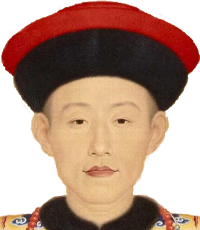The samurai in fact and fiction
The samurai, or what the Japanese refer to as bushi, first rose to prominence during the Kamakura period, 1185–1333 CE. They were soldiers who helped enforce the peace and secured people’s property, but the samurai were also known to practice, and to support, the arts. Many art forms which we today think of as quintessentially Japanese were first developed among them – including No theater, tea ceremony, haiku poetry, and of course martial arts such as archery and swordsmanship. Many samurai were Zen Buddhists, a version of the Buddhist teaching which emphasized meditation and stoicism in the face of death.
During the Warring States period, 1467-1573 CE, the samurai made up the foot-soldiers of the vast armies that were pitted against each other. Once the wars were over, some were made into bureaucrats in the new Tokugawa regime, while others came to work for various daimyos. A few of them became ronin, masterless samurai, who roamed the roads of Japan looking for work and for adventure. During the Tokugawa period the samurai class counted perhaps 10 percent of Japan’s population. The samurai were abolished in 1873, when Japan established a conscripted army. Their titles and privileges were exchanged for government bonds.
According to the code of the samurai, loyalty is the supreme value, and a good samurai should unquestioningly follow the wishes of his master, even if it implies certain death. Seppuku – what some non-Japanese refer to as “harakiri” – is the inevitable fate of a samurai who fails to live up to his obligations. Yet the notion of bushido, understood as a distinct chivalric code, appeared only towards the end of the nineteenth-century, in the discourse of nationalistic Japanese politicians who demanded unquestionable loyalty from a by now largely urbanized, and increasingly unruly, Japanese population.
Since 1945, the world of the samurai has been a staple of Japanese films and TV dramas. The artistically most significant of this output are the films directed by Akita Kurosawa. His leading actor, Toshihiro Mifune, with his physical style of acting, has come to personify the way the samurai talked and carried themselves. Kurosawa has both influenced, and been influenced by, cowboy movies. Kurosawa’s “The Seven Samurai,” 1954, was made into “The Magnificent Seven” in 1960, and his “Yojimbo,” 1961, was made into “A Fistful of Dollars,” 1964, starring Clint Eastwood. In both cases, entire scenes were lifted from Kurosawa’s work.
Read
External links
- “Tamahagane — Unique Metal for Unique Japanese Swords”
- History Channel, “Samurai and Bushido”
- Okakura-Kakuzo, "The Book of Tea," 1906
- Rotten Tomatoes, "Seven Samurai"
- Rotten Tomatoes, "Yojimbo"
- Samurai Archives podcast collection
- The Gaijin Gleaner, “Seppuku — A Practical Guide”
- Toshihiro Mifune
- Wikimedia Commons, “Seppuku”

